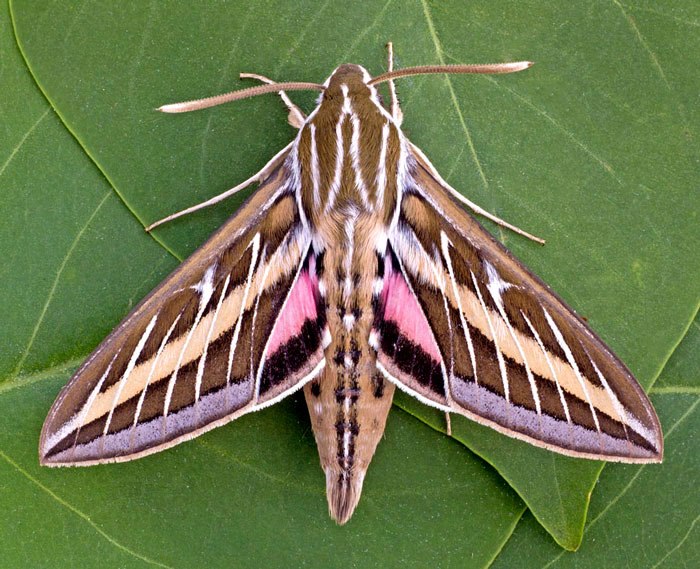Every Wednesday, enthusiasts of the natural world take a moment to celebrate and appreciate the extraordinary biodiversity that surrounds us. This week, we delve into the enigmatic world of the White Lined Sphinx Moth—a creature that exemplifies both beauty and ecological importance. The striking appearance and remarkable life cycle of this moth serve as potent reminders of nature’s intricate web of connections. As we unpack the profundity behind its existence, we uncover not only its biological significance but also the larger narrative of preservation and awareness in a rapidly changing environment.
Taxonomy and Identification
The White Lined Sphinx Moth (Hyles lineata) belongs to the Sphingidae family, which encapsulates a group of moths known for their swift flight and large size. This nocturnal lepidopteran is predominantly recognized by its elongated body and distinctive wing pattern, which features a series of white, creamy stripes running horizontally across its dark forewings. Its hindwings are of a striking pinkish hue, providing a vivid contrast that is not only visually stunning but also acts as a form of camouflage among flowers at twilight.
Adults can reach an impressive wingspan of approximately 3.5 to 4 inches, making them one of the more conspicuous moths in the late summer to early autumn months. Another key identifying feature is its pronounced proboscis, which can be extended to probe deep flowers for nectar—an ability that connects them intricately to the pollination processes essential for various plant species.
Life Cycle: A Journey through Transformation
In their caterpillar stage, these creatures engage in a frenetic feeding pattern, consuming the leaves of plants such as tomatoes, tobacco, and various other herbaceous and woody species. This phase of excess is critical, as it allows them to accumulate the necessary energy reserves before undergoing the next astonishing transformation.
Once fully grown, the larvae enter a pupal state, during which they undergo a radical reorganization of their bodies—a phenomenon known as complete metamorphosis. Encased in a protective chrysalis, the caterpillar embarks on an unparalleled voyage of change. After several weeks, this chrysalis ruptures, liberating the adult moth to embark on its journey into the world—a rebirth that resonates deeply with themes of renewal and survival.
Ecological Role: The Unsung Heroes
The ecological implications of the White Lined Sphinx Moth extend far beyond their beguiling aesthetics. As important pollinators, these moths play a crucial role in the reproduction of many flowering plants. Their long proboscis enables them to access nectar deep within tubular flowers, while simultaneously transferring pollen, thereby promoting genetic diversity. This symbiotic relationship illustrates how their existence contributes to the larger environmental tapestry and how the loss of such species could disrupt these delicate ecosystems.
Moreover, these moths themselves become a vital food source for nocturnal predators. Birds and bats alike rely on their availability, underscoring the interconnectedness of food webs. By sustaining the very foundation of their own ecosystem, the White Lined Sphinx Moth carries intrinsic value that extends beyond individual survival—it exists as a linchpin within a grand narrative of life.
Conservation Status: A Call to Action
As we contemplate the significance of the White Lined Sphinx Moth, it becomes evident that it is a symbol of the interconnectedness of life. Not only does it underscore the necessity of natural stewardship, but it also invites us to reflect on our role within this intricate mosaic. Each species, each caterpillar, and each moth has a narrative that deserves recognition—a testament to the resilience of nature against the odds of modernity.
In conclusion, the White Lined Sphinx Moth exemplifies how a singular creature can encapsulate the broader themes of ecological interconnectedness and environmental stewardship. As we celebrate “What’s That Wednesday,” let us appreciate not only the beauty of this remarkable moth but also our responsibility to preserve its legacy for generations to come.









Leave a Comment